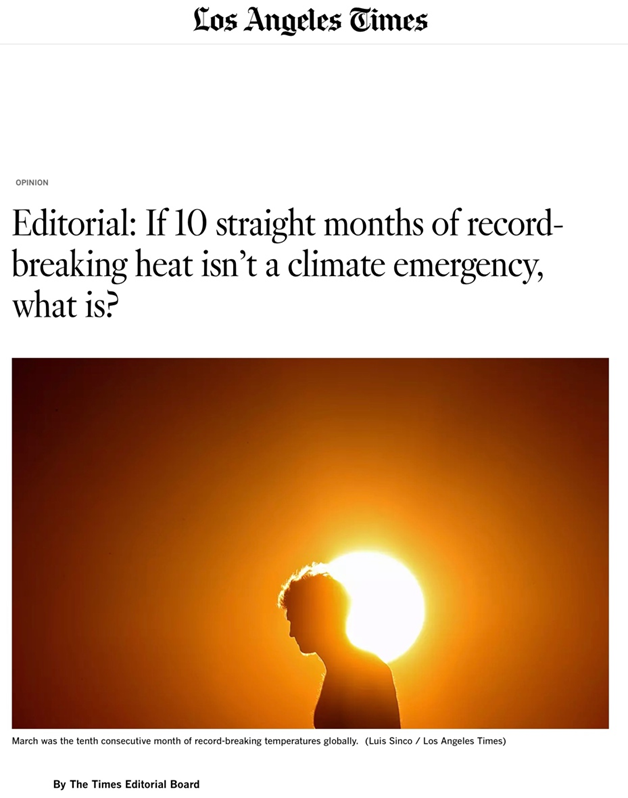New paper finds West Antarctic glacier likely melting from geothermal heat below
http://hockeyschtick.blogspot.com/2014/10/new-paper-finds-west-antarctic-glacier.html
A paper published today in Earth and Planetary Science Letters finds evidence that one of the largest glaciers in West Antarctica, the Thwaites Glacier, is primarily melting from below due to geothermal heat flux from volcanoes located along the West Antarctic Volcanic Rift System, not due to man-made CO2. CAGW proponents have alleged that West Antarctic glaciers such as such as the Thwaites Glacier and the neighboring Pine Island Glacier are rapidly melting due to man-made greenhouse gases and/or ocean heating, despite observations showing the air temperature in the Antarctic hasn’t risen since 1979, Antarctic sea surface temperatures have fallen since 2006, and ARGO ocean heat content of the Southern Ocean shows no increase at any level of the top 2000 meters since the system was put in place in 2004. The authors find the neighboring Pine Island Glacier also overlies the same volcanic rift system and thus may also be melting from geothermal heat below. The West Antarctic Volcanic Rift System is illustrated by JoNova below, and just so happens to correspond to the areas of notable glacier melt and alleged warming. In contrast, East Antarctica, which holds > 80% of Antarctic ice mass and does not have any known underlying volcanoes, is significantly increasing in ice mass. The paper joins several others finding geothermal heat largely if not entirely responsible for glacier melt in multiple locations in both Antarctica and Greenland, i.e. not anthropogenic. Excerpts from post “The “pause” of global sea ice. Up by ~76% in 2013 & 2014 from the 2007-2012 minima”: The air temperature in the Antarctic hasn’t risen since 1979: And Antarctic sea surface temperature has fallen since 2006, which would explain the extra sea ice: And if we look at ARGO OHC measurements in the Antarctic we see there is no warming at any level in the ocean: Variable crustal thickness beneath Thwaites Glacier revealed from airborne gravimetry, possible implications for geothermal heat flux in West Antarctica Theresa M. Damiania, , , Tom A. Jordanb, , Fausto Ferracciolib, , Duncan A. Youngc, , Donald D. Blankenshipc • The Byrd Subglacial Basin beneath Thwaites Glacier is part of Mesozoic widespread rifting. • Thin crust (18–24 km) exists in eastern Marie Byrd Land and beneath Thwaites Glacier. • Gravity evidence supports hypothesis of warm mantle beneath Marie Byrd Land. • Supports the use of thin crust and higher heat flux values in Western Antarctica. Abstract Thwaites Glacier has one of the largest glacial catchments in West Antarctica. The future stability of Thwaites Glacier’s catchment is of great concern, as this part of the West Antarctic Ice Sheet has recently been hypothesized to already be en route towards collapse. Although an oceanic trigger is thought to be responsible for current change at the grounding line of Thwaites Glacier, in order to determine the effects of this coastal change further in the interior of the West Antarctic Ice Sheet it is essential to also better constrain basal conditions that control the dynamics of fast glacial flow within the catchment itself. One major contributor to fast glacial flow is the presence of subglacial water, the production of which is a result of both glaciological shear heating and geothermal heat flux. The primary goal of our study is to investigate the crustal thickness beneath Thwaites Glacier, which is an important contributor to regional-scale geothermal heat flux patterns. Crustal structure is an indicator of past tectonic events and hence provides a geophysical proxy for the thermal status of the crust and mantle. Terrain-corrected Bouguer gravity disturbances are used here to estimate depths to the Moho and mid-crustal boundary. The thin continental crust we reveal beneath Thwaites Glacier supports the hypothesis that the West Antarctic Rift System underlies the region and is expressed topographically as the Byrd Subglacial Basin. This rifted crust is of similar thickness to that calculated from airborne gravity data beneath neighboring Pine Island Glacier, and is more extended than crust in the adjacent Siple Coast sector of the Ross Sea Embayment. A zone of thinner crust is also identified near the area’s subaerial volcanoes lending support to a recent interpretation predicting that this part of Marie Byrd Land is a major volcanic dome, likely within the West Antarctic Rift System itself. Near-zero Bouguer gravity disturbances for the subglacial highlands and subaerial volcanoes indicate the absence of supporting crustal roots, suggesting either (1) thermal support from a warm lithosphere or alternatively, and arguably less likely; (2) flexural support of the topography by a cool and rigid lithosphere, or (3) Pratt-like compensation. Although forward modeling of gravity data is non-unique in respect to these alternative possibilities, we prefer the hypothesis that Marie Byrd Land volcanoes are thermally-supported by warmer upper mantle. The presence of such inferred warm upper mantle also suggests regionally elevated geothermal heat flux in this sector of the West Antarctic Rift System and consequently the potential for enhanced meltwater production beneath parts of Thwaites Glacier itself. Our new crustal thickness estimates and geothermal heat flux inferences in the Thwaites Glacier region are significant both for studies of the structure of the broader West Antarctic Rift System and for assessments of geological influences on West Antarctic Ice Sheet dynamics and glacial isostatic adjustment models. Related: New paper suggests volcanoes are causing Antarctic ice loss from belowAntarctic ice sheet is melting from below, unrelated to CO2Did Greenland & W Antarctic Ice Sheet Loss Suddenly Double?Fire And Ice; Volcanoes, Not CO2, Melt West Antarctic
— gReader Pro



